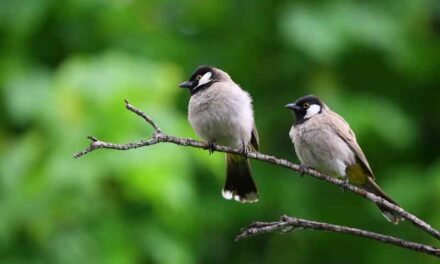The Greater White-fronted Goose can be found in marshy tundra, wetlands, rivers, and ponds during the breeding season. In winter, they stay in agricultural fields, marshes, bays, and lakes. They forage on both land and water and feed on crops like seeds and grains from agricultural fields. They also eat marsh grasses, tundra plants, aquatic plants, fresh plant growth in fields, berries, aquatic insects, and their larvae.
Introduction
The Greater White-fronted Goose (Anser albifrons) is a medium-sized goose species that breeds in the Arctic regions of North America and Eurasia. It is named after the distinctive white patch of feathers on its forehead. The Greater White-fronted Goose is a migratory bird that travels long distances between its breeding and wintering grounds. In this blog post, we will explore the habitat and diet of the Greater White-fronted Goose.
The Greater White-fronted Goose is a migratory bird that breeds in the Arctic regions of North America and Eurasia. During the winter months, these geese can be found in large numbers in wetlands and agricultural fields throughout North America, from California to the Gulf Coast and up into Canada. In this blog, we will explore the habitat and diet of the Greater White-fronted Goose.
During the winter months, Greater White-fronted Geese migrate south to more temperate regions, where they can be found in large flocks in wetlands, fields, and marshes. They prefer to be near open water and areas with plenty of food sources. In North America, they are often found in flooded fields and agricultural areas, where they can feed on crops like corn and wheat.
Habitat of Greater White-fronted Goose
During the breeding season, Greater White-fronted Geese can be found in marshy tundra, wetlands, rivers, and ponds. They prefer to nest in areas with tall grasses or shrubs that provide cover from predators. In winter, they migrate to warmer areas and can be found in agricultural fields, marshes, bays, and lakes. They are known to form large flocks during migration and wintering. They prefer to nest in areas with shallow ponds, small lakes, and slow-moving streams surrounded by short grasses and sedges. These geese are known to return to the same breeding sites year after year, which allows them to establish strong social bonds and mating pairs.
Diet of Greater White-fronted Goose
Greater White-fronted Geese are omnivores and feed on both land and water. They feed on crops like seeds and grains from agricultural fields. They also eat marsh grasses, tundra plants, aquatic plants, fresh plant growth in fields, berries, aquatic insects, and their larvae. During migration and wintering, they rely heavily on agricultural fields for food. During the breeding season, they feed on tundra plants like sedges, mosses, and lichens. These plants provide the geese with the nutrients they need to produce eggs and raise their young.
Importance of Greater White-fronted Goose
The Greater White-fronted Goose plays an important role in the ecosystem as a seed disperser. They consume large quantities of seeds during migration and wintering which helps to spread plant species across different habitats. They are also important prey species for predators such as foxes, wolves, coyotes, eagles, and hawks.
Conservation status of Greater White-fronted Goose
The Greater White-fronted Goose is classified as a species of “Least Concern” by the International Union for Conservation of Nature (IUCN). However, their populations have declined in some areas due to habitat loss and hunting. Conservation efforts are underway to protect their breeding grounds and wintering habitats.
Conclusion
The Greater White-fronted Goose is an important bird species that play a vital role in the ecosystem. Their habitat and diet are closely linked to their survival and well-being. By understanding their habitat requirements and feeding habits, we can help to protect this species for future generations.


